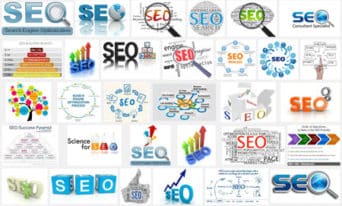Let’s Do SEO: Here’s Where to Start
by Jason Unger, Founder
Insights / Digital Marketing /

Photo by Jon Tyson via Unsplash
Search engine optimization (SEO) is probably the simplest (but most complex) and straightforward (but actually really unclear) digital marketing initiative your organization will ever undertake.
As we’ve discussed before, SEO isn’t just one thing … even though it kind of is.
Confused yet?
It’s OK.
The big problem is that everyone has their own understanding or expectation of what’s involved with “doing” SEO, and that makes the process of actually achieving results that much more difficult.
So if you’re looking to “do” SEO, here’s how you should approach it.
Step #1: Determine Your Goal
This is obvious, yet almost always completely overlooked.
What’s your actual goal in beginning this initiative? Why are you doing it?
Here’s a few good examples:
- We want to generate new sales leads or event registrations
- We want to drive more traffic to our homepage
- We want to appear higher in search results pages for our targeted keywords
Here are some not-as-good goals:
- We want to be #1 in Google
- We want more website visitors
- We want to convert more visitors to subscribers
Why aren’t these examples as good as the first set? They aren’t specific enough, and they aren’t directly related to your work improving your SEO.
If you want to be the first result in Google, what keywords are you targeting? You need to know that.
If you want more website visitors, where do you want them to go? Which page on your site? Who are these people and what are they looking for that they would come to your site?
If you want to convert more visitors to subscribers, what improvements or changes are you making ON your site to do that?
Figuring out your actual goal is always the first step to determine how you go about making it happen. Your goal needs to be specific, and it needs to be measurable. Otherwise, you’ll be lost in the woods trying to achieve an unknown objective … and not even sure if you did it.
Step #2: Technical Improvements
Technical fixes are one of the most important SEO fundamentals, and should be addressed next.
Hopefully, your website is well built and adheres to best practices, but there are almost always tweaks you can make to improve it.
In its algorithms, Google cares about a number of technical aspects, including:
- Site Speed
- Security
- Responsive Design
- Overall Performance
- Usability and Core Web Vitals
- Accessibility
- Submitting to Search Console
There are multiple website tools you can use to test for all of these; you should get started.
Making sure that your website’s code functions optimally is crucial for SEO, but what’s even better is that all of these tweaks will make your users happier, too.
Believe it or not, Google cares that people can actually use your website – and not just that you’ve checked off a bunch of boxes in their laundry list of recommendations.
So even if you’re not looking to improve your SEO, do all of these things anyway; it’s just good business.
Step #3: Create Relevant, Optimized Content
Now that you have a specific goal and you’ve taken care of all of the technical details, it’s time to create relevant, optimized content on your site.
What is that content? Well, I can’t tell you exactly what your content should be, but here’s how we’d approach it.
Understand Your User
If you want to generate more clicks to your website or more conversions from search results, you have to know who your targeted user is and why they would be interested in you in the first place.
Are they looking for a service or a product you offer? If so, where are they in the buying process?
What are their concerns? How do they want to engage with your organization or your product?
Map them out. You may not be correct the first time, but if you don’t have a clear picture in your head of who your target user is, you can’t effectively target them.
Write to Your User’s Needs
As you build a landing page or beef up a page that already exists on your website, take off your marketing hat and put on a user hat.
What does your user really want to know? What’s going to help them on their journey to achieve their (and hopefully your) mission?
Too often, I see marketing teams throw the kitchen sink when creating content, or bloviate on everything they’re doing – rather than thinking about the user’s experience. Don’t just focus on the cool stuff you’re doing; be laser-focused on their needs and what’s going to help them make a decision.
For SEO, Use Simple, Out-of-Context Language
If the content you’re writing is meant for users coming from search results, don’t assume that they know anything else about your organization or company.
Remember, they’re coming from Google – they haven’t started on your homepage and clicked through your menus or likely even used your site search. Chances are, Google has pointed them to an inner page on your site, and since that’s the first experience they’re having, it has to make sense out of context.
Writing content for an out-of-context user also helps in search results; when you see search results stacked on top of each other, the page titles and meta descriptions that are most effective are the ones that explain everything in a simple, easy-to-understand way (without needing to know anything else about the website).
Obviously, be sure to use a tool like Yoast SEO to set specific titles and descriptions to show up in search results.
What’s Next?
This 3-step process sounds simple, but it’s not. There’s a lot of work that goes into improving your SEO – and we haven’t even talked about paid advertising yet.
As we always say, your website is a work of art; never finished, only abandoned. SEO is the same, because it’s about making your site more usable, perform better, and help your users achieve their goals.
Want to chat more about your SEO goals? Reach out and let’s talk.




